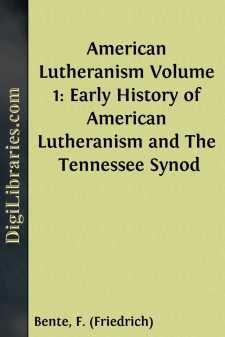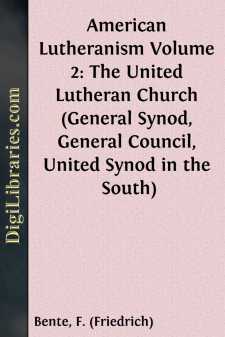Categories
- Antiques & Collectibles 13
- Architecture 36
- Art 48
- Bibles 22
- Biography & Autobiography 813
- Body, Mind & Spirit 141
- Business & Economics 28
- Children's Books 12
- Children's Fiction 9
- Computers 4
- Cooking 94
- Crafts & Hobbies 4
- Drama 346
- Education 46
- Family & Relationships 57
- Fiction 11826
- Games 19
- Gardening 17
- Health & Fitness 34
- History 1377
- House & Home 1
- Humor 147
- Juvenile Fiction 1873
- Juvenile Nonfiction 202
- Language Arts & Disciplines 88
- Law 16
- Literary Collections 686
- Literary Criticism 179
- Mathematics 13
- Medical 41
- Music 40
- Nature 179
- Non-Classifiable 1768
- Performing Arts 7
- Periodicals 1453
- Philosophy 64
- Photography 2
- Poetry 896
- Political Science 203
- Psychology 42
- Reference 154
- Religion 513
- Science 126
- Self-Help 83
- Social Science 81
- Sports & Recreation 34
- Study Aids 3
- Technology & Engineering 59
- Transportation 23
- Travel 463
- True Crime 29
Historical Introductions to the Symbolical Books of the Evangelical Lutheran Church
Categories:
Description:
Excerpt
Book of Concord, or Concordia, is the title of the Lutheran corpus doctrinae, i.e., of the symbols recognized and published under that name by the Lutheran Church. The word symbol, sumbolon, is derived from the verb sumballein, to compare two things for the purpose of perceiving their relation and association. Sumbolon thus developed the meaning of tessara, or sign, token, badge, banner, watchword, parole, countersign, confession, creed. A Christian symbol, therefore, is a mark by which Christians are known. And since Christianity is essentially the belief in the truths of the Gospel, its symbol is of necessity a confession of Christian doctrine. The Church, accordingly, has from the beginning defined and regarded its symbols as a rule of faith or a rule of truth. Says Augustine: "Symbolum est regula fidei brevis et grandis: brevis numero verborum, grandis pondere sententiarum. A symbol is a rule of faith, both brief and grand: brief, as to the number of words, grand, as to the weight of its thoughts."
Cyprian was the first who applied the term symbol to the baptismal confession, because, he said, it distinguished the Christians from non-Christians. Already at the beginning of the fourth century the Apostles' Creed was universally called symbol, and in the Middle Ages this name was applied also to the Nicene and the Athanasian Creeds. In the Introduction to the Book of Concord the Lutheran confessors designate the Augsburg Confession as the "symbol of our faith," and in the Epitome of the Formula of Concord, as "our symbol of this time."
Symbols may be divided into the following classes: 1. Ecumenical symbols, which, at least in the past, have been accepted by all Christendom, and are still formally acknowledged by most of the evangelical Churches; 2. particular symbols, adopted by the various denominations of divided Christendom; 3. private symbols, such as have been formulated and published by individuals, for example, Luther's Confession of the Lord's Supper of 1528. The publication of private confessions does not necessarily involve an impropriety; for according to Matt. 10, 32 33 and 1 Pet. 3, 15 not only the Church as a whole, but individual Christians as well are privileged and in duty bound to confess the Christian truth over against its public assailants. Self-evidently, only such are symbols of particular churches as have been approved and adopted by them. The symbols of the Church, says the Formula of Concord, "should not be based on private writings, but on such books as have been composed, approved, and received in the name of the churches which pledge themselves to one doctrine and religion." (CONC. TRIGL., 851, 2.)
Not being formally and explicitly adopted by all Christians, the specifically Lutheran confessions also are generally regarded as particular symbols. Inasmuch, however, as they are in complete agreement with Holy Scripture, and in this respect differ from all other particular symbols, the Lutheran confessions are truly ecumenical and catholic in character. They contain the truths believed universally by true Christians everywhere, explicitly by all consistent Christians, implicitly even by inconsistent and erring Christians. Christian truth, being one and the same the world over is none other than that which is found in the Lutheran confessions.
2. The German Book of Concord.
The printing of the official German edition of the Book of Concord was begun in 1578 under the editorship of Jacob Andreae. The 25th of June, 1580, however, the fiftieth anniversary of the presentation of the Augsburg Confession to Emperor Charles V, was chosen as the date for its official publication at Dresden and its promulgation to the general public. Following are the contents of one of the five Dresden folio copies which we have compared: 1. The title-page, concluding with the words, "Mit Churf. G. zu Sachsen Befreiung. Dresden MDLXXX." 2. The preface, as adopted and signed by the estates at Jueterbock in 1579, which supplanted the explanation, originally planned, of the theologians against the various attacks made upon the Formula of Concord....





